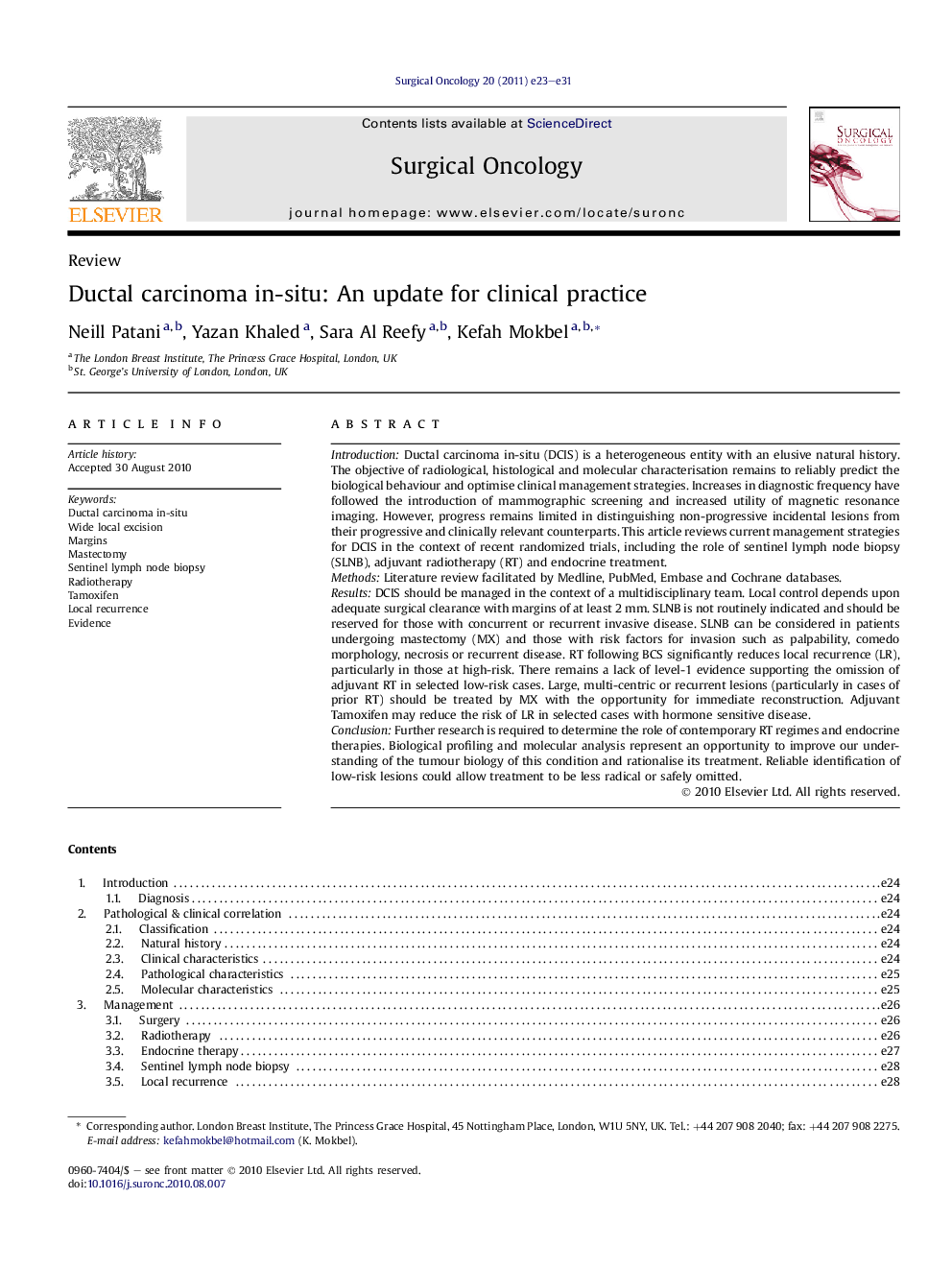| کد مقاله | کد نشریه | سال انتشار | مقاله انگلیسی | نسخه تمام متن |
|---|---|---|---|---|
| 3998067 | 1259191 | 2011 | 9 صفحه PDF | دانلود رایگان |

IntroductionDuctal carcinoma in-situ (DCIS) is a heterogeneous entity with an elusive natural history. The objective of radiological, histological and molecular characterisation remains to reliably predict the biological behaviour and optimise clinical management strategies. Increases in diagnostic frequency have followed the introduction of mammographic screening and increased utility of magnetic resonance imaging. However, progress remains limited in distinguishing non-progressive incidental lesions from their progressive and clinically relevant counterparts. This article reviews current management strategies for DCIS in the context of recent randomized trials, including the role of sentinel lymph node biopsy (SLNB), adjuvant radiotherapy (RT) and endocrine treatment.MethodsLiterature review facilitated by Medline, PubMed, Embase and Cochrane databases.ResultsDCIS should be managed in the context of a multidisciplinary team. Local control depends upon adequate surgical clearance with margins of at least 2 mm. SLNB is not routinely indicated and should be reserved for those with concurrent or recurrent invasive disease. SLNB can be considered in patients undergoing mastectomy (MX) and those with risk factors for invasion such as palpability, comedo morphology, necrosis or recurrent disease. RT following BCS significantly reduces local recurrence (LR), particularly in those at high-risk. There remains a lack of level-1 evidence supporting the omission of adjuvant RT in selected low-risk cases. Large, multi-centric or recurrent lesions (particularly in cases of prior RT) should be treated by MX with the opportunity for immediate reconstruction. Adjuvant Tamoxifen may reduce the risk of LR in selected cases with hormone sensitive disease.ConclusionFurther research is required to determine the role of contemporary RT regimes and endocrine therapies. Biological profiling and molecular analysis represent an opportunity to improve our understanding of the tumour biology of this condition and rationalise its treatment. Reliable identification of low-risk lesions could allow treatment to be less radical or safely omitted.
Journal: Surgical Oncology - Volume 20, Issue 1, March 2011, Pages e23–e31